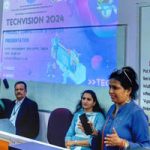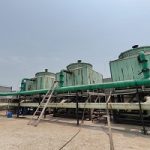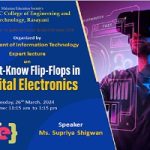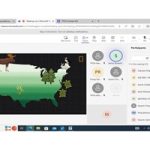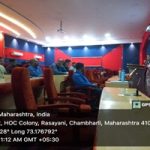| Date and Time | 5th October, 2018 on 11.00 a.m. to 1.00 p.m. |
| Theme | MESA-AESA organised Guest Lecture |
| Venue | Conclave 1, 3rd Floor |
| Department | Automobile and Mechanical Engineering |
| Target Audience | All Mechanical and Automobile Students |
| Speaker Profile | Dr. R. C. Prasad Designation: Professor in Mechanical Engineering, PHCET, Rasayani 30+ Years Experince in Teaching Research and Industry Senior Faculty and Head of Materials Research Centre, PHCET |
Abstract of Talk: Prof. Dr. R. C. Prasad initiated his talk with basics of fracture. He explained the various mechanisms of crack and crack propagation that leads to fracture. The deterministic analysis to understand failure and root causes was presented. He delivered importance of metallography in failure analysis. In afternoon session, he explained microstructural characterization, mechanical testing and fracture surface topography with the help of few case studies.
Metallography: Metallography is the study of the structure of metals and of metal alloys through the examination of specimens with a metallurgical microscope. The structures observed in the microscope are often recorded photographically. The metallographic study of an archaeological artifact involves the removal of a small sample of metal from the artifact and the subsequent microscopic examination of the sample.
Types of information about an artifact obtainable through metallography
- The fundamental processes by which the object was manufactured, e.g. cast in a mould or worked to shape; cast and subsequently worked; soldered or welded together; cast solid or hollow, etc.;
- the temperatures to which the metal may have been subjected during or after manufacture (including casting and annealing temperatures; tempering and quenching ranges);
- the presence and nature of surface decoration and coatings and the existence of joins, e.g. gilding or silvering; inlays; soldering or welding;
- an idea of the composition of an alloy, e.g. the % of carbon present in steel, or the % of tin present in a tin bronze;
- the type and extent of internal and external corrosion.
Engineering Institutes are facing challenges to meet the rising expectations of stake holders. The challenge today is to prepare work ready technical personnel by offering quality technical education at UG level. The way forward for non-autonomous institutes is to provide training and learning materials that covers the gap between syllabus prescribed by universities and graduates attributes required by industries. This training is step in this direction to prepare students who meet the career challenges & opportunities through special features related to their course.
Metals & Alloys are widely used for a variety of industrial applications. This training workshop will provide an outstanding opportunity to the students pursuing diploma / degree in engineering & professionals working in Production & Quality assurance in industries to develop skill and sound understanding of micro-structural characterization & their applications to find the root cause of failure of industrial components.





